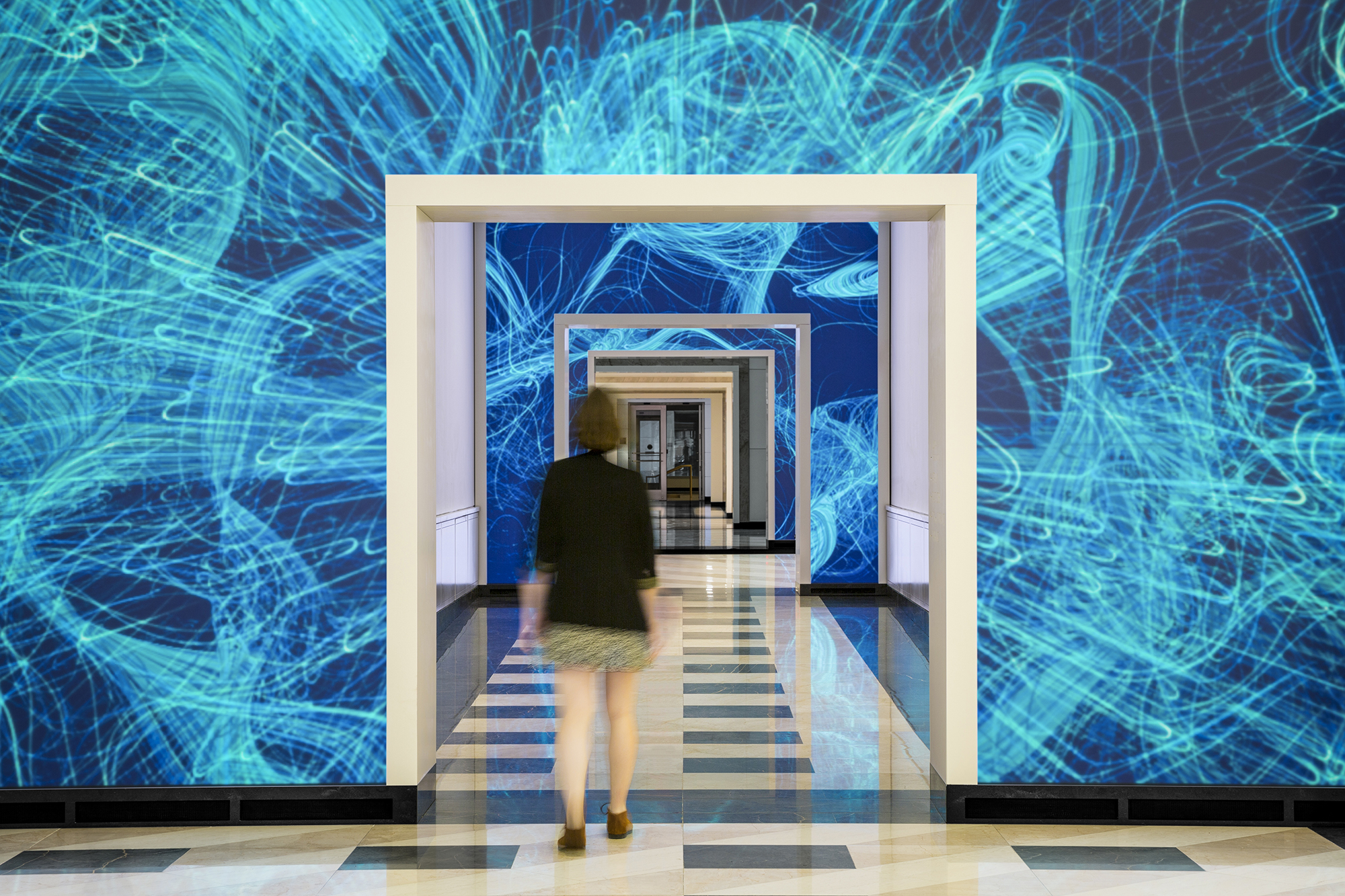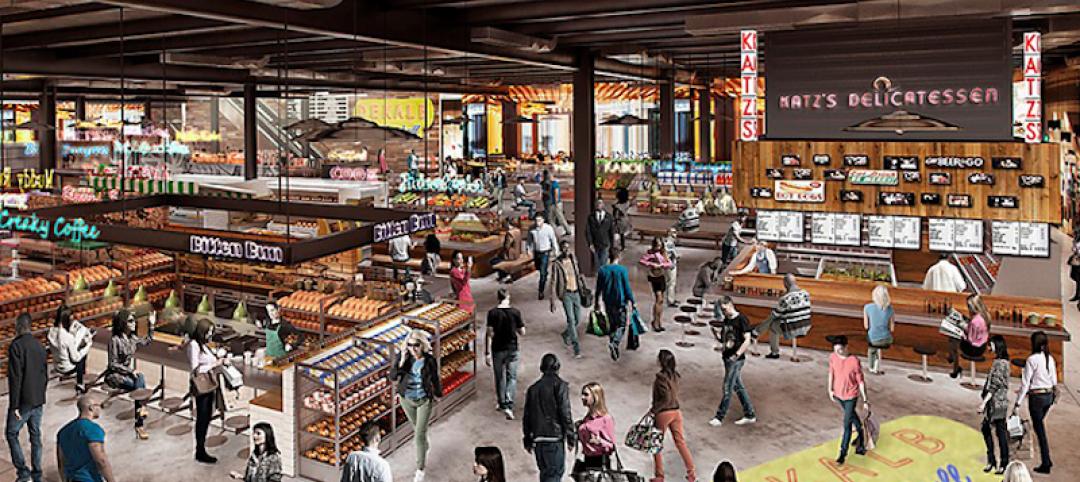NBBJ, the global architecture and design firm, today announced that it has acquired experience design studio ESI Design. The acquisition signals a new era where buildings will be transformed into immersive and interactive digital experiences that engage and delight.
By joining forces, NBBJ and ESI Design’s multidisciplinary team will be able to integrate digital experiences early in the design process, providing clients with more impactful and streamlined services.
Sweeping advancements in technology, from miniaturization to contemporary light projection technology, will make it possible for NBBJ and ESI Design to bring the type of immersive experiences that are increasingly desired as digital centerpieces in museums, stadiums, and transportation hubs to a wider range of industries, including healthcare, education, civic, commercial real estate, and science.
The two firms—which have previously collaborated on commercial real estate and corporate workplace projects in Boston and New York City—will now provide unified solutions as one of the largest and most robust experience design platforms in the country.
“By integrating the design of architecture and dynamic digital experiences, we will create boundless opportunities to energize the places we live, work, and play to stimulate our senses and inspire discovery, learning, and impact” said Steve McConnell, FAIA, Managing Partner of NBBJ. “The acquisition of ESI Design brings this vision to life and increases NBBJ’s ability to serve our clients as they activate their brands, create community, inspire wellbeing, and thrive.”
NBBJ is one of the largest architecture and design firms in the world, with clients that include Amazon, the Bill & Melinda Gates Foundation, Massachusetts General Hospital, Microsoft, and the University of Oxford. ESI Design has most recently received critical acclaim for its design of the immersive visitor experience at the Statue of Liberty Museum, which opened in May 2019. Other clients include Barclays, eBay, The Ellis Island National Museum of Immigration, PNC Bank, and WarnerMedia.
“We are at an exciting moment in time where the diverse skillsets of digital designers, media architecture technologists, gaming engineers and storytellers will partner with architects to create buildings as places that are lively, engaging and evolving,” said Edwin Schlossberg, the founder and principal designer of ESI Design. “NBBJ and ESI Design share a vision that well-designed spaces can bring ideas and brands to life in ways that inform, inspire, and delight. Through our partnership we will push the boundaries of what a building can be and help our clients bring people closer together through shared experiences – by seeking to design in ways that enable the environment to learn from its users so that it, and them get better with use.”
ALSO SEE: Tech Report 5.0: Digital Immersion
Under the agreement, ESI Design becomes NBBJ’s 18th studio. As part of the acquisition, Schlossberg becomes a partner at NBBJ and will lead the ESI Design studio at NBBJ.
Six ESI Design leaders will become principals at NBBJ: Alexandra Alfaro, Angela Greene, Cara Buckley, Emily Webster, Layne Braunstein, and Susan Okon. NBBJ will retain two office locations in New York City: The NBBJ New York office at 140 Broadway and ESI Design, an NBBJ studio at 111 Fifth Avenue. This will create a presence of 160 NBBJ employees in New York City, bringing the firm’s total employees to more than 800 worldwide.
Related Stories
Architects | Sep 26, 2016
Explore the world through architectural adventures
A new travel program offers design enthusiast travelers 10 global destinations.
Architects | Sep 21, 2016
DLR Group broadens its practice range and market penetration with addition of Westlake Reed Leskosky
The merger, say company officials, creates “a global design leader” in a consolidating industry.
Architects | Sep 21, 2016
Design for the transition from thinking to creating
While heads-down work continues, the changing nature of learning and work has resulted in a shift toward frequent and spontaneous exchanges.
Codes and Standards | Sep 21, 2016
Healthy buildings becoming a key design priority for both architects and building owners
Nationwide survey finds nearly three of four architects cite health impacts influencing design decisions
Cultural Facilities | Sep 19, 2016
International competition recognizes insect-inspired design for Moscow Circus School
The proposal would make the school’s activities more transparent to the public.
Architects | Sep 19, 2016
A workplace designed for the innovation economy
Over the past 100 years, how we work has changed dramatically, and these changes have impacted workplace design.
Architects | Sep 16, 2016
Former architect now builds architectural wonders out of LEGO blocks
Adam Reed Tucker’s creations are currently on display at the Museum of Science and Industry.
Architects | Sep 15, 2016
Implicit bias: How the unconscious mind drives business decisions
Companies are tapping into the latest research in psychology and sociology to advance their diversity and inclusion efforts when it comes to hiring, promoting, compensation, and high-performance teaming, writes BD+C's David Barista.
Museums | Sep 14, 2016
Architectural model museum opens in Japan
The museum includes models from Japanese architects including Shingeru Ban, Kengo Kuma, and Riken Yamamoto.
Designers | Sep 13, 2016
5 trends propelling a new era of food halls
Food halls have not only become an economical solution for restauranteurs and chefs experiencing skyrocketing retail prices and rents in large cities, but they also tap into our increased interest in gourmet locally sourced food, writes Gensler's Toshi Kasai.

















